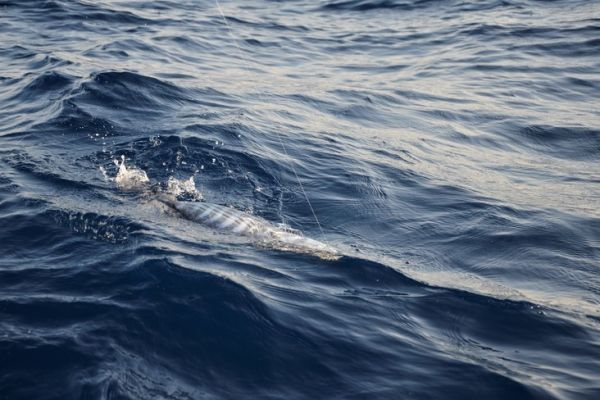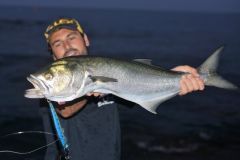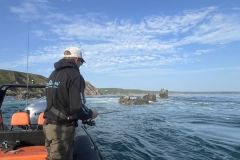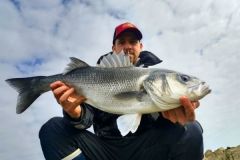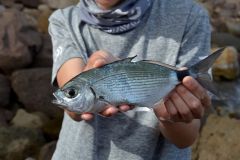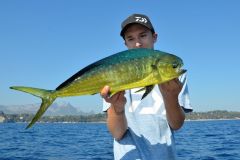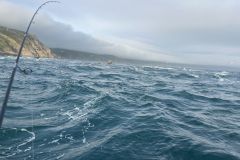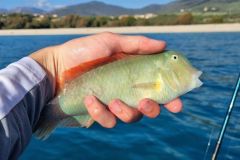For vertical fishing
Vertical fishing, whether with bait or lure, always ensures good line tension. Some fish, such as dentex or sea bream, with their sharp teeth and tendency to seek the bottom, are nylon's worst enemies. Thanks to its abrasion resistance, fluorocarbon limits the risk of breakage or cutting.
However, when fishing with bait lures such as tenya or madaï, it can be interesting to use nylon to keep as much of the natural action of our rig in the water as possible. Some fish, such as pike-perch, which are mostly found on sandy bottoms, don't necessarily require fluorocarbon, as the hooks on bait lures are generally made of assist braid and the fish's teeth are never in contact with our leader. Nylon will also cushion violent head strikes and avoid breaking too frequently.
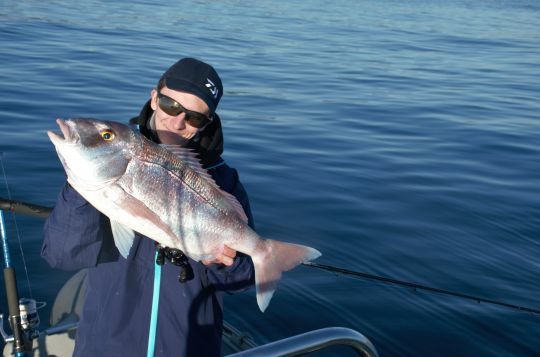
Lure casting
Lure casting is almost exclusively done with fluorocarbon for several reasons. Whether fishing from shore or from a boat, fish can easily reach the bottom to rub against it and break the line. Differences in tension during animation can also let sharp-toothed fish bait our lure and hit the leader.
The only technique for which nylon is recommended is the linear soft lure, because with lower weights of lead head, the lure will swim much better. Linear lures also provide constant tension, preventing the lure from becoming engrossed.
Fast and furious
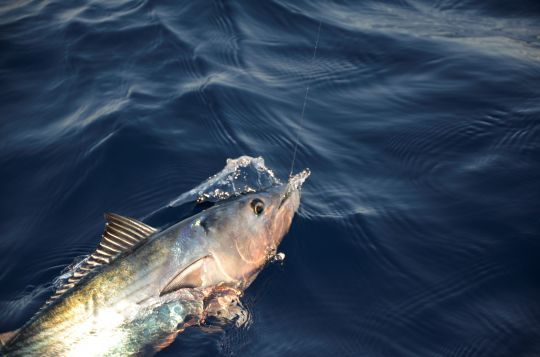
When fishing from a boat with a livebait or trolling, certain characteristics of nylon or fluorocarbon can be of interest. Classic trolling with diving hard lures is generally used for pelagic fish such as pelamide or mackerel. These fish can make very violent starts on touch and therefore easily bite on the lure. In this case, nylon is very interesting, as its flexibility will allow our lure to swim better and absorb violent starts thanks to its elasticity.
The principle is the same when fishing for large fish such as tuna or yellowtail. Since it is necessary to use leaders of over 10 metres in length, fluorocarbon tends to retain the shape it has on its spool. Nylon, on the other hand, allows maximum flexibility and allows the fish to swim freely without constraint.

 /
/ 